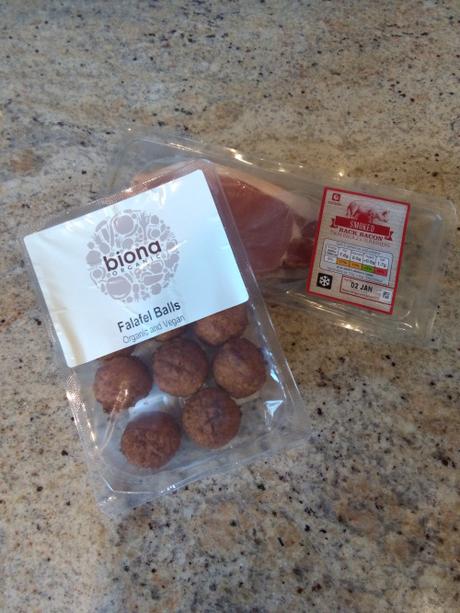At this time of festive overindulgence, perhaps it’s good to think about opting for the opposite – ‘underindulgence’ – in particular the growing momentum around reducing meat consumption.
This is not a new idea but the dynamics swirling around it have changed. Whilst the key motivation when I was growing up was moral and centred around the idea of not wanting to inflict cruelty or be responsible for the death of animals, the environmental rationale for opting for a more vegetarian or vegan lifestyle is now paramount. Fresh evidence appears in the headlines almost daily:
‘Avoiding meat and dairy products is the single biggest way to reduce your environmental impact on the planet, according to the scientists behind the most comprehensive analysis to date of the damage farming does to the planet.’
However, it seems that there are variety of different trajectories a meat-reducing world might go.
Let’s get insects out of the way first. Some people are very excited by the prospect of either making insects themselves palatable or grinding up them up to use as a nutritious flour of some kind. In fact, in November 2018, Sainsbury’s was proud to claim it was the first UK supermarket to stock edible insects, making packets of Eat Grub’s smoky BBQ crunchy roasted crickets available in 250 stores across the country. However, to produce insects at scale and for large swathes of the population to eat them is another matter, There is currently limited experience or knowledge about how to do this or what the impact might be. This is in terms, for example, of allergic reactions, microbial risks or even what welfare standards to apply to rearing arthropod livestock.
Others hope that cutting-edge science will have the answer and give us meat that either is not real meat or else real meat but does not involve rearing and slaughtering livestock as currently takes place.
The former, a meat-like product, is actually quite advanced in some markets, the US in particular. Companies such as Impossible Foods have created ‘foods’ which act like meat in every sense – they look, smell, taste and even bleed like meat – but are in fact newly manufactured foods. In case the case of Impossible Foods, they have created something magical reliant on their star ingredient, leghemoglobin. This ingredient is found naturally in the roots of soy plants and derived in a fermentation process similar to brewing. However, as this is effectively a genetically modified organism which has never been eaten before by humans, Impossible Foods sought approval from the FDA to confirm leghemoglobin was safe to eat and this approval was eventually given. Whatever reservations some might have about the safety of such products and in particular risks of allergic reactions, as well as the resource costs involved, the scale and ambition of Impossible Foods is impressive. Whilst it is easy to pitch non-meat options to affluent, health conscious and well educated individuals, it is a much harder sell to those who don’t have the means (neither the time nor the money) to be so selective and discerning. Impossible Foods has made a start to address this: its burgers are now being sold in the outlets of fast food chain White Castle across the US (albeit priced at one dollar more than their standard burgers).
The other way to get real meat but without all the usual associated negative impacts is to effectively ‘grow’ meat in a lab. This ‘clean meat’ is still at very early stages of development, but already significant progress has been made. Costs have dropped dramatically: from $325,000 for a burger in 2013 to $11 five years later with the potential to go lower. More importantly, clean meat is attracting the interest of investors already big in the meat world. In mid 2018, the American meat giant Tyson Foods announced a multi-million dollar investment in a cellular meat startup. This is a sure sign this kind of meat is to be taken seriously.
However, there are also challenges here, which relate to the fact that currently growing meat in this way relies on animal stem cells which are typically fed with a serum derived from the blood of calf foetuses – in other words, clean meat uses animal products and is not vegan.
Now, for our third meat-free path, let’s go back in time to when this involved going for something that didn’t have any pretense at being meat – a veggie alternative that was clearly veggie. I’m thinking of something like a good old-fashioned nut roast or veggie burger made of beans and the like. From having spoken to colleagues, it seems there has been a shift in expectations between one generation and the next. Some Millennials expect going meat-free to mean having something else that is just like meat, whilst older generations expect meat-free to look ‘veggie’. I wonder how this will pan out and whether there are also comparable regional differences in attitudes.
The final trajectory for meat-free is to put forward to the idea of preparing dishes that are designed to be vegetarian or vegan from the outside. An example here is the cuisine from Asia which makes use of vegetable and vegetable forms of protein such as bean curd, nuts and pulses. This seems like a much simpler path – we use ingredients that have been tried and tested over many generations, with the promise of lots of spice to keep things interesting.
However, no one would try to claim that anything can match up to the smell and taste of a proper bacon sarnie! I wonder if Impossible Foods is working on that.

